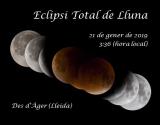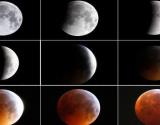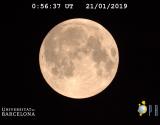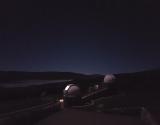Visibility
On Monday 28th September 2015 a total lunar eclipse will be entirely visible from the Iberian Peninsula, the Balearic and Canary Islands. The eclipse will also be visible from the rest of Europe, America, Africa and western Asia although from some places will only be visible as partial (see map).
The next total eclipse visible from Catalonia will be on 28 July 2018
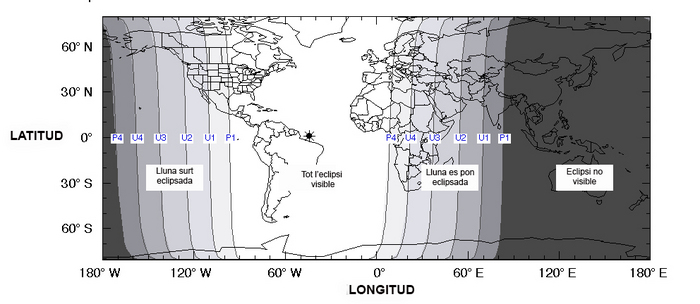
Phases of the eclipse
| Phase | Instant (TU) | Latitude | Longitude |
|---|---|---|---|
| Begining Penumbral Phase (P1) | 00:12 | 1º01' | -6º35' |
| Begining partial phase (U1) | 01:07 | 1º12' | -19º55' |
| Begining totality (U2) | 02:11 | 1º25' | -35º19' |
| Maximum | 02:47 | 1º32' | -44º14' |
| End totality (U3) | 03:23 | 1º39' | -52º37' |
| End partial phase (U4) | 04:27 | 1º52' | -68º00' |
| End penumbral phase (P4) | 05:22 | 1º03' | -81º20' |
Note: To obtain official time must be added 2 hours to the Universal Time (UT)
The following figures (F. Espenak, NASA's GSFC) show the passage of the moon through the shadow of the Earth and the eclipse visibility areas
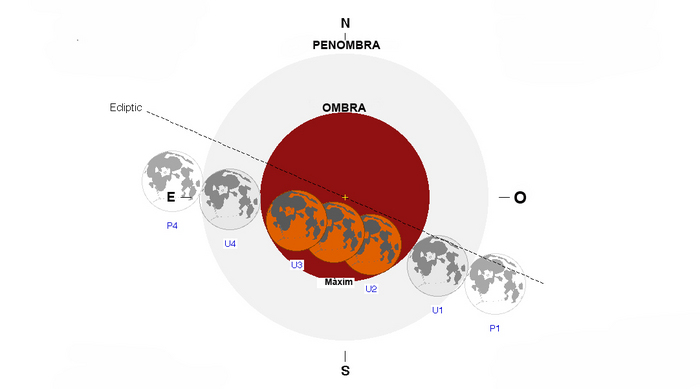
"SuperMoon" Eclipse
This year the lunar eclipse coincides with the "SuperMoon". Since 1900 a "SuperMoon" and an eclipse only have coincided in five occasions. The last time was in 1982 and the next will be in 2033.
But a "SuperMoon" is not a raree event ,there are 3 or 5 supermoons every year.
What is a "SuperMoon"?
Due to the orbit of the Moon is not a circle but an ellipse with the Earth located in one of its focus sometimes the Moon is closer to the Earth than at other times. When the Moon and Earth are close together, the point at which the Moon is at is called it’s “perigee”. When the Moon and Earth are far apart, the point at which the Moon is at is called it’s “apogee”.
When the Moon is both a full moon and at its perigee (or close to it), this is called a supermoon. Because the perigee is the closest point between the Moon and the Eart at that point the Moon is seen a little bigger than at the apogee. The supermoon will have a diameter about 15% larger than the Moon at the apogee. This is a diference hard to appreciate to the naked eye.
Links

